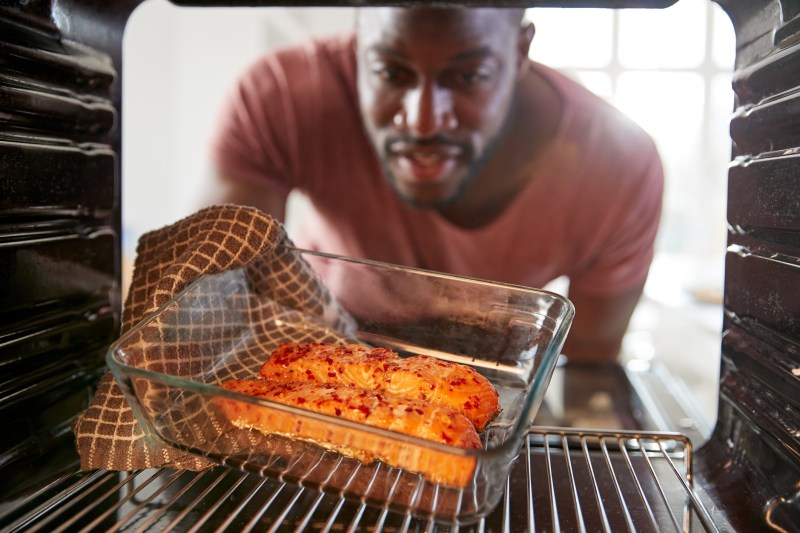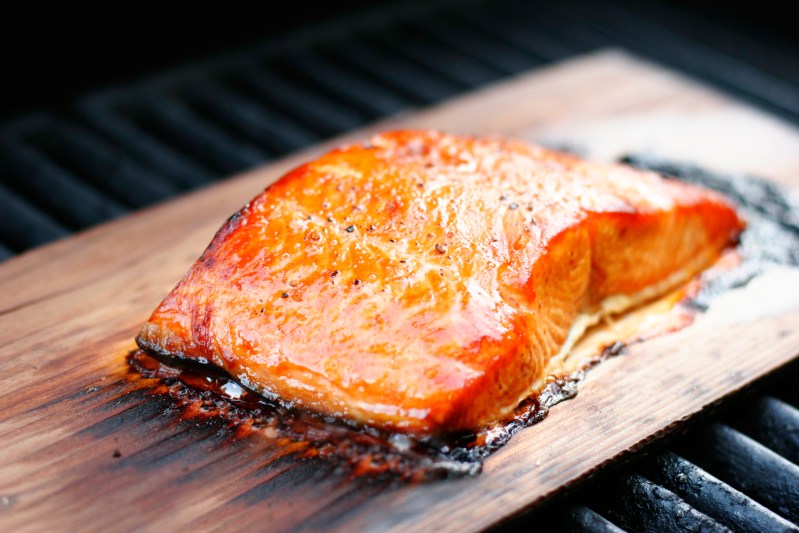
It’s happened to the best of us. Last night’s salmon dinner was so exquisite that you can’t wait to have another serving for lunch. So, you turn to your trusty microwave. You pop in the fish, watching your meal spin on that revolving plate, hungry and eager to open the door. You wait eagerly while the microwave does its thing, and then you grab your plate. You sit down, take a bite … but then, dry, smelly, rubbery fish. Gross.
Salmon is a very unique fish, bursting with flavor and nutrients. One of the reasons for our obsession with this tasty fish is its classification as an oily fish. Salmon is higher in omega-3 fatty acids than many other fish. Omega-3 fatty acids are incredibly important for brain function, memory, maintaining healthy blood fat levels (lowering triglycerides), and a host of other important functions. So important, in fact, that it’s recommended to eat a portion of oily fish at least twice a week.
The best ways to reheat salmon

If you’re into weekly meal prep or if you made too much salmon to eat in one sitting, you may have found yourself wondering how to reheat salmon. Let us help you out with some nifty ways to reheat your oceanic meal.
How to reheat salmon in the oven
While this method takes a little longer, it is the best way to ensure that you preserve the integrity of the salmon flesh when reheating. The secret is using a low temperature and sticking to the cooking time.
- Preheat your oven to 275 degrees Fahrenheit.
- Squeeze half a lemon or rub a tablespoon of olive oil overtop of your salmon.
- Fold a piece of baking foil loosely over the salmon.
- Place the salmon on a baking tray.
- Bake the salmon for 15 minutes.
- Check to see if the salmon has heated through to an internal temperature of 145 degrees Fahrenheit. If not, cook for an additional 5 minutes.
- Enjoy!
How to reheat salmon on a stovetop
You can also reheat salmon on the stovetop, which is a bit different from the oven, as described above.
- Heat a pan over medium-low heat with a tablespoon of extra virgin olive oil or butter.
- Add the leftover salmon to the pan
- Cook it on the stovetop for 1 to 2 minutes per side, just until it’s heated through.
How to reheat salmon in an air fryer
An air fryer is a fantastic way to reheat salmon when you don’t want to heat the whole house by turning on the oven. It’s also a much quicker and very simple process.
- Set the air fryer to 360 degrees Fahrenheit.
- If your salmon has the skin intact, be sure to place the skin side down on a piece of parchment paper.
- Heat for 4 to 5 minutes or until salmon is heated through.
How to reheat salmon in the microwave
Microwave reheating is infamous for overcooking parts of a dish and undercooking others. It tends to be harsh on delicate meats like salmon; however, the convenience of a microwave cannot be beaten. It’s the most popular appliance for quick and easy reheating. Here lies the secret to reheating salmon in the microwave:
- Place salmon in a microwave-safe dish or bowl.
- Use a paper towel or a lid to keep moisture in the container and distribute heat effectively.
- If your salmon does not have a sauce or if you are not reheating the salmon with other sides like vegetables and rice, you want to ensure that there is sufficient moisture in the container. For dry salmon or if reheating with rice dishes, add a tablespoon of water, lemon juice, sauce, or broth to the container to prevent drying out.
- Set microwave power to a low setting — 30% or so will do.
- Microwave for 30 seconds.
- Remove the salmon, flip, or move with a fork and stir sides like rice and vegetables.
- Place back in the microwave for an additional 30 seconds.
How to reheat smoked salmon
Smoked salmon is a favorite for kitchens across the globe. Smoking the meat ensures that the salmon’s flavors are preserved while cooking. If you are looking to keep these flavors when reheating the salmon, then this method is the best of the bunch.
- Preheat your oven to 325 degrees Fahrenheit.
- Place the salmon on a baking dish or sheet.
- Coat with a dash of olive oil or a teaspoon of butter.
- Warm the salmon for 5 minutes.
- Check to see if the salmon has warmed. The internal temperature should be around 145 degrees Fahrenheit.
- Cook for 2-3 minutes extra if the salmon needs further heating.
- Tuck in right away to enjoy the freshly heated flavors!
Additional tips

As mentioned, salmon can dry out easily when reheated. To prevent this, you can add moisture in a couple of ways. Place a small pat of butter or a squeeze of lemon juice on top of the fish before reheating. You can also add a splash of water or broth to the pan or other cooking device. Also, don’t blast the salmon with high heat. Reheat it slowly over low heat to avoid overcooking it.



